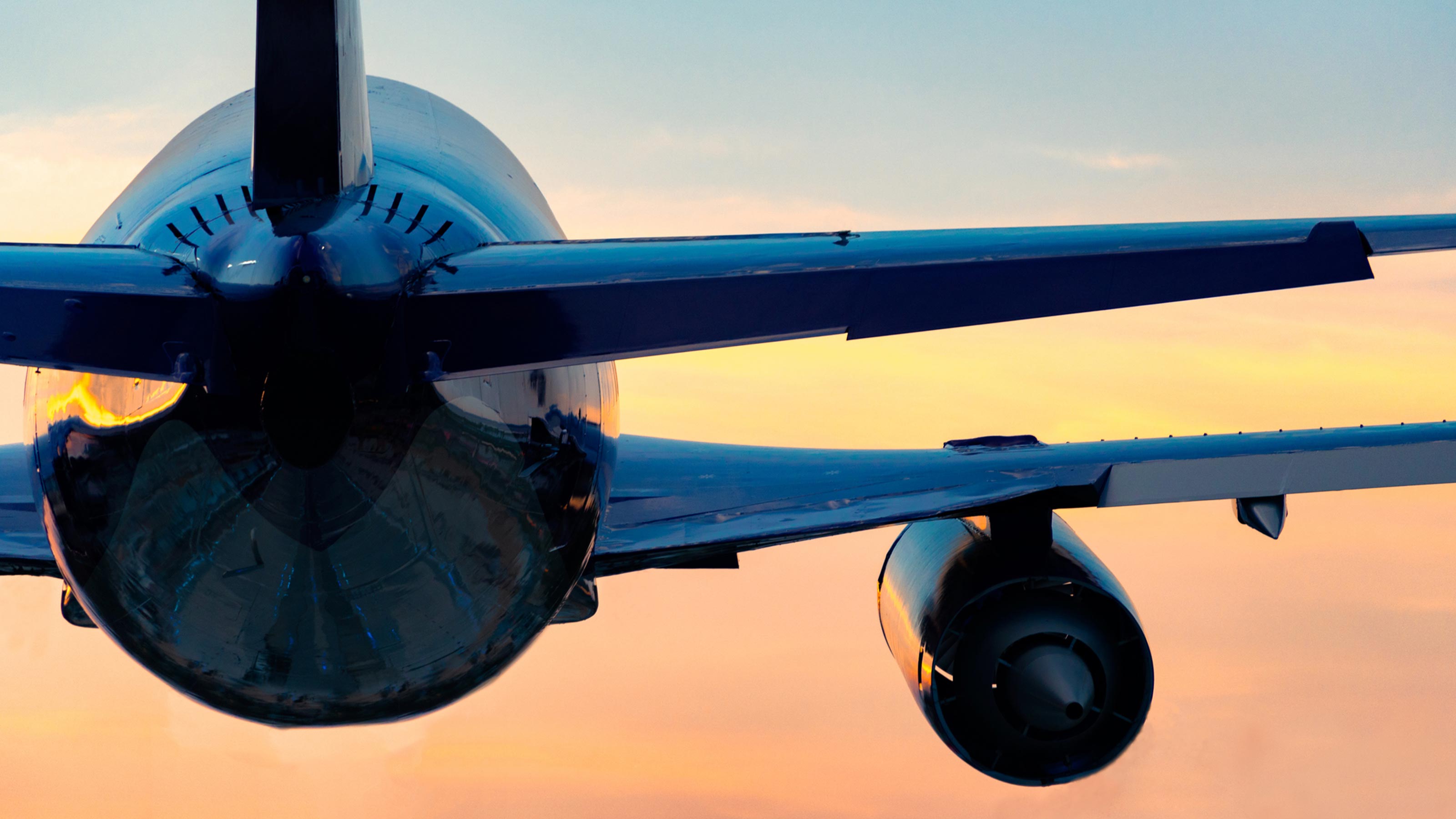Airline Industry Set for COVID Comeback, But It Will Be a Slow Climb
The Kiplinger Letter forecasts leisure travel will soar past business travel, but air travel demand won't reach pre-pandemic levels until as late as 2024.


After taking a drubbing from the pandemic, aviation will stage a comeback in 2021.
But despite a number of tailwinds, including many effective vaccines for COVID-19 and significant, pent-up demand for air travel, the road to recovery will be a long one.
The outlook for global air travel demand won't reach pre-COVID levels until 2022 at the earliest, and maybe not until 2023 or 2024, after registering a decline of more than 60% in 2020. U.S. air travel volumes are still half normal levels and aren’t expected to pick up until later in 2021.

Sign up for Kiplinger’s Free E-Newsletters
Profit and prosper with the best of expert advice on investing, taxes, retirement, personal finance and more - straight to your e-mail.
Profit and prosper with the best of expert advice - straight to your e-mail.
The recovery will be uneven, with demand for domestic air travel soaring as the pandemic wanes in certain countries. International travel, by contrast, will be much slower to recover, given various restrictions on cross-border movement. Likewise, leisure travel will outpace business travel.
The vacation industry should thrive as the vaccines allow people to venture out more. Surveys show that people are pining to go on vacation again and plan to do it this year — welcome news for airlines, hotels and other businesses that cater to travelers. Also, a boost for places that rely heavily on tourism: Fla., Hawaii, Las Vegas, etc. And, to a lesser degree, New York City. International travel figures to be down, and New York is a must-see for foreign visitors.
Airline budgets will likely be squeezed for many years to come. Worldwide, the industry took on over $200 billion in debt last year.
That’s bad news for aircraft manufacturers, such as Airbus and Boeing, who also saw many of their cash-strapped customers cancel orders last year.
Combined, the two companies expect to deliver roughly 1,100 jets in 2021, up from 723 in 2020, but below the 1,583 aircraft delivered to customers in 2018.
Boeing in particular stands to gain from the return of the 737 Max after two deadly crashes that grounded the plane for the majority of 2019 and 2020 and caused the company to lose market share to Airbus. Experts say Boeing needs to get its act together now to stay competitive with its European rival in the long run.
But the pace of new orders will likely be slow, especially for twin-aisle jets that are used for international flights, such as Boeing’s 777 and 787 Dreamliner.
Companies further up the supply chain are also struggling. GE Aviation, a leading manufacturer of jet engines, laid off at least 25% of its workforce in 2020. Spirit AeroSystems, which builds aircraft structures, also shed jobs last year.
One bright spot: Air cargo demand, which will return to prepandemic levels in the first quarter of 2021. While many passenger airlines are shrinking their fleets, cargo carriers are adding capacity to keep up with the huge increase in e-commerce.
Bottom line: The industry’s future will likely be one of slower growth. Over the next two decades, air travel demand is expected to grow by roughly 4.0% per year, down from an average of 5.3% per year in the 20 years preceding COVID-19.
Note that civil aviation accounts for 5% of U.S. GDP, and aviation equipment is one of America’s top exports. In 2016, the industry generated close to $2 trillion in economic activity and supported 11 million jobs with $488 billion in earnings.
Get Kiplinger Today newsletter — free
Profit and prosper with the best of Kiplinger's advice on investing, taxes, retirement, personal finance and much more. Delivered daily. Enter your email in the box and click Sign Me Up.

-
 Stock Market Today: Stocks Struggle Amid Tariff Uncertainty
Stock Market Today: Stocks Struggle Amid Tariff UncertaintyBoeing dropped after China suspended new aircraft orders, while Bank of America and Citi climbed on earnings beats.
By Karee Venema
-
 Starbucks 2025 Dress Code Changes: See the New Look
Starbucks 2025 Dress Code Changes: See the New LookThe 2025 Starbucks dress code change features a uniformed look as part of creating a more familiar and friendly cafe experience.
By Sean Jackson
-
 Roth IRA Contribution Limits for 2025
Roth IRA Contribution Limits for 2025Roth IRAs Roth IRA contribution limits have gone up. Here's what you need to know.
By Jackie Stewart
-
 Four Tips for Renting Out Your Home on Airbnb
Four Tips for Renting Out Your Home on Airbnbreal estate Here's what you should know before listing your home on Airbnb.
By Miriam Cross
-
 Five Ways to a Cheap Last-Minute Vacation
Five Ways to a Cheap Last-Minute VacationTravel It is possible to pull off a cheap last-minute vacation. Here are some tips to make it happen.
By Vaishali Varu
-
 Best Places to Visit Where the Dollar Is Strong
Best Places to Visit Where the Dollar Is StrongFrom the Americas and Europe to Africa and Asia, we list the 10 best places to travel to where the U.S. dollar is the strongest.
By Quincy Williamson
-
 24 Best Travel Websites and Apps to Find Deals and Save You Money
24 Best Travel Websites and Apps to Find Deals and Save You MoneyTravel Use Kiplinger's guide to the best travel websites and find discounts and deals so you can vacation without breaking the bank.
By Rivan V. Stinson
-
 How to Figure Out How Much Life Insurance You Need
How to Figure Out How Much Life Insurance You Needinsurance Instead of relying on rules of thumb, you’re better off taking a systematic approach to figuring your life insurance needs.
By Kimberly Lankford
-
 Amazon Big Deal Days Is Coming! We’ve Got All the Details
Amazon Big Deal Days Is Coming! We’ve Got All the DetailsAmazon Prime To kick off the holiday season with a bang, Amazon Big Deal Days runs Tuesday, October 8 and Wednesday, October 9.
By Bob Niedt
-
 How to Shop for Life Insurance in 3 Easy Steps
How to Shop for Life Insurance in 3 Easy Stepsinsurance Shopping for life insurance? You may be able to estimate how much you need online, but that's just the start of your search.
By Kaitlin Pitsker